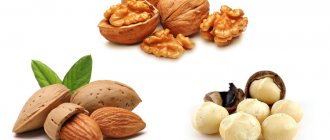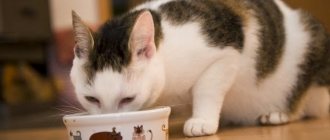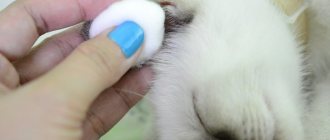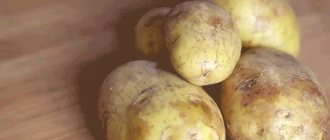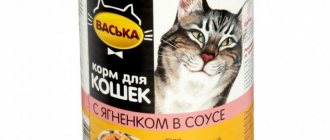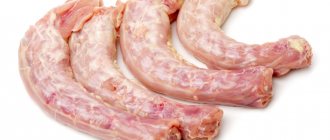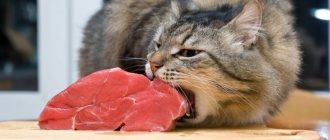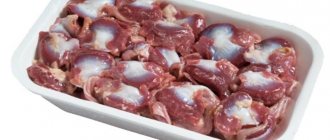5484Pavel
1
Everyone knows how picky cats are when it comes to food. She will not eat every product, and not every product will be good for her. But can cats eat bread? It is known that many cats are partial to this product, although it cannot be called a favorite treat either. Most likely, bread is for cats, a delicacy, as they say, for amateurs. There are cats that are completely indifferent to this product, and there are animals that are crazy about it. Let's take a closer look at whether it is possible to feed cats bread.
The benefits of bread depend on its composition. The benefits or harm depend on the ingredients. However, this also applies to humans. When buying bread in a store, we don’t always think about what it contains, what substances?
© shutterstock
Is it possible to give a cat bread?
Bakery products can be given to an animal, but in small quantities and provided that it likes such food.
The product is a source of essential vitamins, carbohydrates and minerals, but if given in excessive quantities, it causes digestive problems. Along with complex carbohydrates, when consuming such baked goods, the cat receives B vitamins, magnesium, potassium, and iodine. Yeast, which is an essential component of baked goods, increases appetite, which can be used when trying to feed a sick animal.
What Bread Shouldn't Contain
A product that is safe for cats does not contain dyes or preservatives of synthetic origin.
If you want to pamper your pet with homemade baked goods, you should not add baking powder to the dough. Veterinarians insist that introducing yeast bread into an animal's food can cause constipation or fermentation processes in the intestines. You should not give your cat products with garlic, onions or nuts. It is recommended to protect the animal from baked goods with the addition of chocolate, bran, raisins, dried apricots or prunes.
The cat is not given bread with garlic.
How much is safe to give?
Considering the high calorie content of the product, its share in the daily diet should not account for more than 10%. Pampering your pet with a large piece of bread is only allowed if it does not receive such food regularly.
Features of canned food
Many cats love canned food. Such food can be not only tasty for such pets, but also quite healthy. Often, such components become part of a mixed diet for cats, which includes beneficial vitamins. There are even high-quality products with antioxidants.
There are a lot of options for canned food for cats. So, in the store you can find the following types of similar delicacies:
- mousses for cats;
- pates;
- minced meat;
- lump meat;
- sausage;
- frozen food.
Canned foods are also profitable and convenient because they do not rot or mold. But if you are choosing such food for your pet, then it is very important to ensure that the packaging is not dented or damaged in any other way. The product should not be depressurized. If you notice traces of rust on the can or it is swollen, then you should not take it.
Veterinarians advise buying canned food for cats only from trusted retail outlets that you are sure are stored correctly. It is important to pay attention to the expiration date of the selected delicacy.
In stores you can also find special canned food in lamisters. A lamister is a metallized container with a soft lid made of the same material. Such packaging is opened in the same way as pates or curd desserts. Mousses and pates are most often sold in lamisters.
When choosing canned food for cats, you need to pay attention to their age. For kittens, food should be taken in small granules. An old cat should eat low-calorie canned food. You can also select special veterinary foods that are indicated for cats with certain diseases.
The dangers of eating too much bread for cats
Without limiting the pet's consumption of yeast-based baked goods, the owner risks causing the pet to develop obesity.
Love for the product can cause other cat health problems:
- urolithiasis and joint pathologies due to the consumption of salt, which is part of bread;
- increased gas formation, which occurs as a result of an insufficient amount of enzymes capable of breaking down the incoming flour;
- vomiting and nausea due to intolerance to the additives included in the product;
- respiratory failure, convulsions, intestinal obstruction due to the adhesion of poorly baked dough to the walls of the esophagus or intestines.
Love of bread can cause urolithiasis.
Many pet owners believe that there is nothing wrong with their pet’s weakness for such baked goods, so they do not limit the amount of product they consume.
However, using baked goods as the basis of a domestic cat's diet leads to:
- deterioration of the condition of his coat;
- bone fragility;
- tooth loss;
- obesity;
- lethargy and drowsiness;
- kidney problems;
- development of pathologies of the cardiovascular system;
- diarrhea and constipation.
Is it worth feeding?
Wheat bread is a neutral product. The classic loaf contains no substances that are toxic or dangerous to animal health, but there is also little benefit from it: the proportion of dietary fiber, microelements and vitamins in processed flour is practically negligible, and the calorie content of white bread is high. Although whole grain varieties contain many useful substances, it is not necessary to intentionally give bread to your cat.
Not all pets gravitate towards flour and eat it with pleasure. But if a cat really loves baking, the owner should be careful. The enzymes in the animal’s stomach and intestines are unable to process large amounts of carbohydrates that make up bread, so you should not encourage your pet’s hobby, especially a young one, so that eating flour does not become a habit.
A cat's love for bread can be put to good use, for example, by feeding her medicines hidden in the crumb of bread, which she eats with pleasure.
Experts advise teaching your pet a healthy diet from an early age.
Veterinarians remind that a kitten’s behavior, including eating behavior, is formed from the first months of life, so proper nutrition and high-quality food are especially important for him at this time. It is recommended to feed the kitten healthy and harmless food, without being carried away by useless treats. A three-month-old baby has already formed gastronomic habits: at this time the kitten switches to the diet of an adult animal. If you set the right vector in childhood, from the first months of life, then in the future this will protect the young cat from troubles with the digestive system, and, in addition, will help avoid greed for harmful foods.
What kind of bread can you give a cat?
When choosing a treat for an animal, you should give preference only to natural products prepared without adding spices, raising agents or preservatives. Even if a cat happily eats overcooked bread, it should be excluded from its diet so as not to increase the risk of developing malignant tumors.
Variety
Under normal conditions, cats that have the opportunity to get their own food prefer rye bread. It contains fewer harmful elements, and the amount of magnesium, potassium and iron is higher. Black bread is easier to digest and less likely to cause digestive disorders.
Cats prefer rye bread.
Freshness
It is strictly forbidden to give fresh, warm product to animals due to the yeast it contains. The pet's menu is allowed to include a product baked at least 24 hours ago. When choosing between dried bread and crackers cooked in the oven, preference is given to the former.
Proper feeding
Bread acts as a delicacy for animals. It is indispensable in a cat’s diet, as it contains minerals and vitamins. In order not to cause harm, it is allowed to consume flour products without preservatives, leavening agents and other harmful components. Homemade rye varieties of bread are best suited for feeding.
Before giving the product to an animal, it must be crushed. It is not recommended to feed your cat bread more than once a week. The diet should include food containing protein and a bowl of water. Water or milk helps push through flour products.
Examples of a cat's daily menu
The cat's diet consists of home-cooked food (based on the animal's weight of 4.5 kg).
№1:
- breakfast: 30 g cottage cheese, 1 chicken egg, water;
- lunch: 40 g cottage cheese, 30 g chicken hearts, water;
- dinner: 70 g rabbit meat, 40 g cottage cheese, water.
№2:
- breakfast: 15 g of vegetables, 50 g of boiled fish;
- lunch: 20 g kefir, 45 g cottage cheese;
- dinner: 20 g kefir, 70 g lean meat.
No. 3 (write for all techniques):
- 500 g beef;
- 2 hard-boiled eggs;
- 1.5 - 2 cups rye crackers;
- chopped parsley.
The meat is boiled, ground in a meat grinder along with the eggs, the ingredients are mixed with breadcrumbs and herbs, and immersed in boiling water for a couple of minutes. Give it to the cat half-baked.
A strange meme inspired the creator of a neural network
Blogger Yuri Krupenin created an unusual Twitter bot that can recognize whether there is a cat or bread in a photo. This neural network can be very useful in finally dealing with the strange meme “neesh podumoy”: a sad cat lies on a baking rack side by side with rosy loaves of bread. “Millions of cats suffer every day because they are confused with bread,” says one of the VKontakte communities, explaining the meaning of the picture.
Many Twitter users have already tested the bot. Just a few minutes after sending the request, @catorbread processes the image and posts its verdict: cat or bread. If the program finds it difficult and cannot unambiguously identify the object, it begins to repeat these words many times. The more words “cat” in a post, the more likely it is that you can see a cat in the photo.
If users decide to “deceive” the bot and upload various photoshops, then the neural network can still get confused.
In some cases, the bot is offered photographs in which there is no bread or a cat at all. In such cases, the system reacts unpredictably.
Is it possible to give sandwiches
To pamper his animal, the owner can make sandwiches for him. It is allowed to eat bread with natural meat pate. At the same time, it should be unburnt and soft. Fried crusts contain a substance called acrylamide, which causes diarrhea. You cannot eat sandwiches with the following types of filling:
- Chocolate paste. Sweet foods are contraindicated.
- Butter. This product contains fats that affect the animal's obesity and its circulatory system.
- Avocado paste. The vegetable contains persin, which causes heart and lung diseases.
- Peanut butter. Peanut butter sandwiches cause obesity.
- Any seasonings, including mayonnaise, ketchup. These products have a bad effect on the gastrointestinal tract.
Bread is a product that should be used in the diet of cats. It is important to consume it no more than once a week, and also to ensure that it contains no preservatives, dyes or seasonings.
Source
How to keep cheese safe
It is impossible to make cheese safe without decomposing it into a tasteless paste. Cooking or freezing is aimed at destroying bacteria, which do not pose a danger in these products. Mold is present, but it causes problems in the form of allergic reactions in only too few animals. Much more often, lactose is the cause of problems.
Cheese is dangerous due to a large amount of fat, spices and salt, which are not destroyed when cooled. The damaging effect of freezing is based on the expansion of water, which ruptures microorganisms as it turns into ice. However, there is too little water in cheeses, and most products do not contain any bacteria.
Prolonged cooking can decompose fats, but this will only happen along with the destruction of all vitamins and proteins, which reduces the nutritional value of the product. As a result of prolonged cooking in cheese, most of its elements are destroyed, which is why it loses its shape and taste.
Cheese is given exclusively in its raw form; it cannot be cooked. This product is also not prepared in any way. At one time, you can give your pet a small cube no larger than a centimeter in size. Cheese is used as a treat, that is, it is added to the animal’s diet no more than once a week. You can feed it to adult pets and kittens older than six months. Before giving it for the first time, you need to make sure that the cat is not allergic to lactose (give her a little milk).
